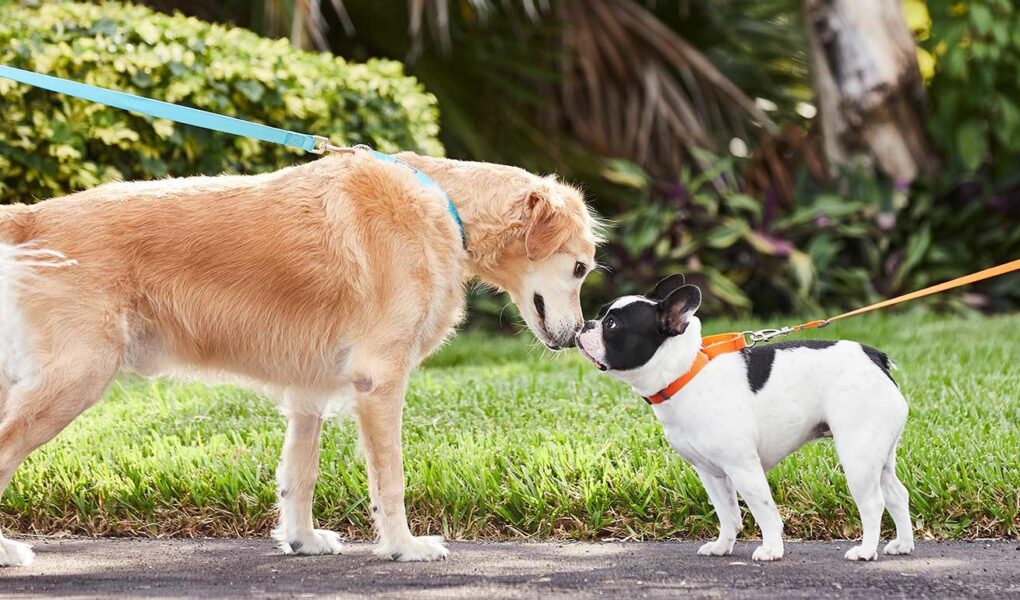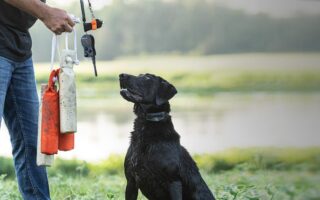Unlocking the Canine Connection: The Importance of Dog Socialization Training
In a world bustling with sights, sounds, and a myriad of new experiences, the art of dog socialization training emerges as a vital key to unlocking the full potential of our four-legged companions. Just as humans benefit from interacting with diverse groups of people, dogs thrive when exposed to various environments, individuals, and other animals. This training is not merely a luxury for pet owners; it’s an essential component of responsible dog ownership that fosters confidence, reduces anxiety, and builds strong bonds between dogs and their families. As we delve into the principles of dog socialization training, we’ll explore its significance, techniques, and the transformative impact it can have on both dogs and their human partners. Whether you’re a new puppy parent or an experienced owner, understanding the nuances of socialization can be the pathway to a harmonious and fulfilling relationship with your furry friend.
Table of Contents
- Understanding the Importance of Dog Socialization for a Happy and Balanced Life
- Creating a Safe and Stimulating Environment for Effective Socialization
- Techniques to Introduce Your Dog to New Friends and Experiences
- Overcoming Common Challenges in Dog Socialization Training
- Q&A
- Closing Remarks
Understanding the Importance of Dog Socialization for a Happy and Balanced Life
Dog socialization plays a pivotal role in shaping your furry friend’s behavior and temperament. Properly socializing dogs from an early age helps them to understand how to interact with other dogs, animals, and humans. A well-socialized dog is often more confident and comfortable in various environments, significantly reducing the chances of fear-based reactions and aggression. Some key benefits of dog socialization include:
- Enhanced confidence: Socialized dogs are more likely to be calm and composed in unfamiliar situations.
- Better behavior: Exposure to different experiences helps mitigate undesirable behaviors such as excessive barking or biting.
- Improved bond: Socialization fosters a closer relationship between you and your dog.
Moreover, proper socialization can lead to a balanced and fulfilling life for both you and your dog. Introducing your pet to various stimuli—such as different sounds, sights, and smells—can enhance their adaptability and resilience. This proactive approach not only contributes to their mental and emotional development, but also equips them with the necessary tools to navigate complex social situations. Consider engaging your dog in activities like:
- Group training classes: Encourages interaction with other dogs and people.
- Dog parks: Provide an environment for off-leash play and social engagement.
- Leashed walks around the neighborhood: Familiarizes them with different sights and sounds.
Creating a Safe and Stimulating Environment for Effective Socialization
Establishing a nurturing atmosphere is crucial for fostering social interactions among dogs. To create such an environment, consider the following elements:
- Comfortable Space: Designate a specific area where dogs can explore freely without the threat of hazards or distractions.
- Controlled Introductions: Gradually introduce dogs to one another, monitoring their behavior to ensure positive interactions.
- Encouraging Activities: Incorporate fun games and training exercises that promote cooperation and communication.
Furthermore, understanding canine body language plays a vital role in maintaining harmony. Engaging in proper observation can help identify signals of comfort or distress. Consider the following signs during social interactions:
| Body Language | Interpretation |
|---|---|
| Wagging tail | Excitement and friendliness |
| Raised hackles | Possible aggression or fear |
| Relaxed body | Comfortable and at ease |
Techniques to Introduce Your Dog to New Friends and Experiences
Introducing your canine companion to new friends and experiences can be an exciting journey for both of you. To ease this transition, begin with positive reinforcement techniques. When your dog meets a new person or another dog, use treats and praise to create a positive association. Start from a distance, allowing your dog to observe the new friend without feeling overwhelmed. Gradually decrease the space as your dog becomes more comfortable, turning this exposure into a positive experience. It’s also essential to ensure that the environment is calm; choose quieter times to visit busy parks or social settings to minimize stress and distraction.
Another effective technique involves controlled introductions. Arrange playdates with dogs that are known to be well-socialized and friendly. Make sure these encounters occur in neutral territory, like a local park or your backyard, to prevent any territorial behavior. You can bring along a few engaging toys to distract both dogs and help them bond through shared activities. Monitor their body language carefully; signs of stress or discomfort such as yawning, lip licking, or excessive barking indicate it’s time to take a step back. Gradually exposing your dog to various people, environments, and other pets will build their confidence and encourage friendly interactions in the long run.
| Technique | Purpose |
|---|---|
| Positive Reinforcement | Creates positive associations with new experiences |
| Controlled Introductions | Ensures safe and gradual exposure to new friends |
| Calm Environment | Minimizes stress and creates a relaxed atmosphere |
| Shared Activities | Encourages bonding through play |
Overcoming Common Challenges in Dog Socialization Training
Socialization is a crucial aspect of responsible dog ownership, but it often comes with its fair share of hurdles. Many dogs exhibit fear or aggression towards unfamiliar people, settings, or other animals. To address this, owners should begin by understanding their dog’s body language and triggers. Recognizing signs of discomfort, such as tail tucking or growling, can guide you in creating a tailored training approach. Gradual exposure to new experiences in a controlled and positive environment can help in building confidence. Implementing positive reinforcement techniques, such as treats or praise, encourages your dog to associate new situations with good outcomes.
Furthermore, consistency is key in overcoming socialization challenges. Routine socialization opportunities can enhance your dog’s adaptability and comfort levels. Engaging in group training classes can provide both structure and support; it allows dogs to interact with others under the guidance of a professional trainer. Consider employing the following tips for effective socialization:
- Start early: The earlier you begin, the more adaptable your dog will be.
- Use positive reinforcement: Always reward good behavior with treats or affection.
- Be patient: Socialization is a gradual process; don’t rush it.
- Monitor progress: Keep track of your dog’s reactions and adjust sessions accordingly.
Q&A
Q&A on Dog Socialization Training
Q: What is dog socialization training?
A: Dog socialization training is the process of exposing your dog to various environments, people, and other animals in a positive and controlled manner. The goal is to help your dog develop confidence and learn appropriate behaviors, reducing the likelihood of fear-based reactions later in life.
Q: Why is socialization important for dogs?
A: Socialization is crucial for a dog’s mental and emotional well-being. It helps them learn how to interact with different stimuli—such as other dogs, people, and various environments—without fear or aggression. Well-socialized dogs are typically happier and more balanced, making them better companions and better behaved in public settings.
Q: When should I start socialization training with my dog?
A: The ideal time to begin socialization training is during the critical developmental period, which usually lasts from about 3 weeks to 16 weeks of age. However, socialization should continue throughout a dog’s life. Older dogs can still benefit from new experiences and interactions, so it’s never too late to start!
Q: How can I effectively socialize my dog?
A: Start by introducing your dog to a variety of safe environments and experiences. This could include trip to the park, meeting other dogs, visiting pet-friendly stores, or attending puppy classes. Be sure to use positive reinforcement—treats, praise, and play—to create positive associations with new experiences. Gradual exposure is key; don’t overwhelm your dog by throwing them into too many new situations at once.
Q: What are some common challenges in dog socialization training?
A: Some dogs may show fear, anxiety, or aggression in new situations, making it tricky to socialize them effectively. Other challenges can include lack of exposure to different environments, a negative past experience, or even genetics. If you encounter such challenges, consulting a professional dog trainer or behaviorist can be beneficial for tailored guidance.
Q: Are there specific environments or situations I should avoid during socialization?
A: Yes, it’s essential to avoid environments that are overly chaotic or may frighten your dog, such as crowded areas with loud noises or aggressive dogs. Additionally, refrain from forcing your dog into uncomfortable situations. Gradual exposure is better than overwhelming them, as this can lead to negative associations and hinder the training process.
Q: Can my adult dog still be socialized?
A: Absolutely! While puppies have a critical period for socialization, adult dogs can still benefit from fresh experiences. The process may take longer, especially if they have developed fears or anxieties. Patience, gradual exposure, and positive reinforcement are key to successfully socializing adult dogs.
Q: How do I know if my dog is properly socialized?
A: A well-socialized dog will generally display calm and confident behavior in various environments. Signs of good socialization include positive interactions with other dogs and people, a willingness to explore new places, and a relaxed demeanor in previously challenging situations. Behavioral cues, like wagging tails and playful behaviors, are also good indicators.
Q: What role do dog parks play in socialization training?
A: Dog parks can be a valuable tool for socialization, but they must be approached with caution. They provide an opportunity for off-leash interaction, which is great for socializing, but not all dogs do well in these uncontrolled environments. Ensure your dog is comfortable around other dogs and monitor their behavior closely. Remember, it’s about quality interactions over quantity!
Q: Any final tips for dog owners on socialization training?
A: Be proactive and consistent. Incorporate socialization into your daily routine and seek out new experiences regularly. Stay patient—every dog is unique and may progress at their own pace. Lastly, always prioritize safety and use positive reinforcement to create enjoyable and lasting memories for you and your furry friend!
Closing Remarks
In the journey of dog ownership, socialization training emerges as a pivotal chapter, one that shapes not only our furry companions but also the bonds we share with them. As we conclude this exploration of dog socialization, it’s clear that the rewards are immense—fostering well-adjusted, confident, and friendly dogs who are ready to engage with the world around them.
Remember, socialization is not a one-time event; it’s an ongoing process that requires patience, consistency, and love. Whether you’re introducing your pup to new experiences, people, or other dogs, each interaction is an opportunity to enrich their lives and strengthen your connection.
As you embark on this rewarding path, embrace the challenges and celebrate the successes, both big and small. With time and commitment, you’ll not only witness your dog flourish but also delight in the joy that comes from a well-socialized friend by your side. Here’s to happy tails and a lifetime of adventures together!


